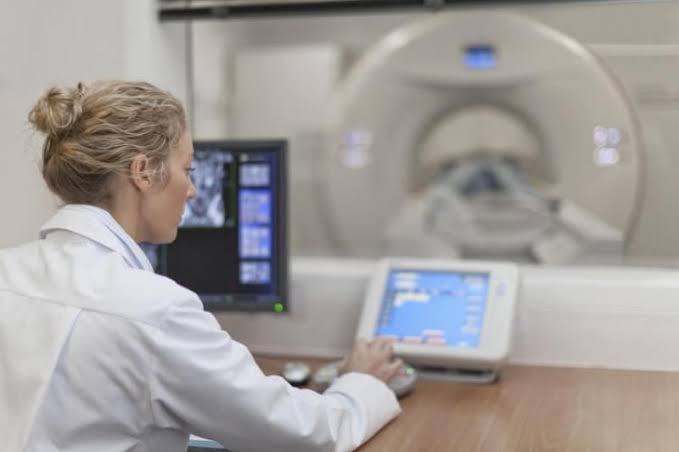
In the intricate world of diagnostic imaging, the quality of an X-ray image is paramount, directly influencing diagnostic accuracy and patient care. While advanced digital radiography is increasingly prevalent, traditional film-based radiography remains a cornerstone in many clinical settings globally. The integrity of the final radiograph hinges not only on correct exposure factors but critically, on the meticulous handling of the X-ray film throughout its lifecycle. Improper handling can lead to various artifacts, necessitating repeat exposures, increasing patient radiation dose, and compromising diagnostic confidence.
The Foundations of Proper X-ray Film Handling: General Principles
Before delving into the specific steps of loading and unloading, it is crucial to understand the foundational principles that govern all aspects of X-ray film handling. These principles are designed to protect the film from damage and unwanted exposure, ensuring its optimal performance.
- Darkroom Discipline: The darkroom is the sanctuary of X-ray film. It must be absolutely light-tight, free from even the smallest white light leaks. Safelights, designed to emit light only in the spectrum to which the film is least sensitive, must be of the correct type and wattage for the specific film being used, positioned at an appropriate distance (typically 3-4 feet) from the work surface. Regular checks for light leaks are imperative.
- Cleanliness: Dust, lint, hair, or any particulate matter can settle on film or intensifying screens, creating visible artifacts on the final image. Work surfaces, cassettes, and the darkroom environment must be kept meticulously clean. A lint-free cloth should be used for cleaning surfaces and cassettes.
- Temperature and Humidity Control: X-ray film is sensitive to environmental conditions. High temperatures can cause fogging, while high humidity can lead to film stickiness and mold growth. Conversely, very low humidity can increase static electricity, leading to static artifacts. Optimal storage conditions generally involve temperatures between 10-21°C (50-70°F) and relative humidity between 30-60%.
- Hand Hygiene and Protection: Always wash hands thoroughly before handling film. For an extra layer of protection against fingerprints, oils, and static, it is highly recommended to wear clean, lint-free cotton or latex/nitrile gloves when handling film or intensifying screens. Powdered gloves should be avoided as the powder can transfer to the film.
- Avoiding Physical Damage: X-ray film is delicate. Creasing, bending, scratching, or dropping the film can all result in permanent artifacts that impair image quality. Handle film gently, holding it only by the edges or corners.
- Static Electricity Management: Static discharge can occur in dry environments, particularly when film is removed rapidly from its box or cassette. This appears as branching black lines on the processed film. Proper humidity control helps mitigate static. When handling film, move slowly and deliberately.
- Proper Film Storage: Unexposed film must be stored in its original, sealed, light-tight packaging. It should be kept upright, away from heat, chemical fumes, and any sources of ionizing radiation (even background radiation can cause fogging over time). Always check and adhere to the film’s expiration date.
- Understanding Film Emulsion: X-ray film has an emulsion side (the side coated with light-sensitive chemicals) and a base side. The emulsion side is typically duller in appearance. For optimal image quality, the emulsion side of the film must be in direct contact with the intensifying screen within the cassette during exposure.
Adherence to these principles forms the bedrock of proper film handling, setting the stage for the specific procedures of loading and unloading.
Loading of Unexposed Film into Cassettes
The process of loading unexposed film into a cassette is a critical step that must be performed with precision in a safe, light-free environment. Any error during this stage can lead to image artifacts or complete film spoilage.
Prerequisites:
- Darkroom Readiness: Confirm the darkroom is completely light-tight. Turn off all white lights and ensure only the appropriate safelight is on. Allow your eyes to adjust to the dim light for a few minutes.
- Cleanliness: Ensure the work surface is clean, dry, and free of dust or debris. Wipe down the cassettes with a lint-free cloth if necessary.
- Supplies: Have the box of unexposed film (ensuring it’s the correct size and type for your cassette), and the empty X-ray cassette(s) ready.
- Personal Protection: Don clean gloves.
Step-by-Step Loading Process:
- Retrieve Unexposed Film: In the darkroom, under safelight, open the outer cardboard box of the X-ray film. Inside, you will typically find a light-tight bag or envelope containing the film sheets. Do not expose the film to any white light.
- Select Film Sheet: Carefully open the light-tight bag. Grasp one sheet of unexposed film by its edges, avoiding touching the central imaging area. Keep the remaining film within the light-tight bag and re-seal it if you are not loading all films immediately.
- Orient the Film: Identify the emulsion side of the film. While some films are double-emulsion (coated on both sides), many are single-emulsion. If single-emulsion, ensure the emulsion side will face the intensifying screen upon closing the cassette. For double emulsion films, this orientation is less critical as both sides are sensitive.
- Open the Cassette: Place the empty cassette on the clean work surface. Unlatch the cassette and gently open it. Avoid touching the intensifying screens directly, as fingerprints or scratches on the screens will appear on every subsequent radiograph.
- Position the Film: Carefully place the unexposed film sheet inside the cassette. Ensure it is centered and lies flat against one of the intensifying screens. The size of the film should perfectly match the size of the cassette and its screens, leaving no gaps. If necessary, gently adjust the film’s position using your gloved fingertips on the edges.
- Close the Cassette: Slowly and gently close the cassette cover. Ensure it closes completely and latches securely. Listen for the distinct “click” sound, which confirms the cassette is properly sealed and light-tight. Do not force it closed, as this could bend or damage the film.
- Prepare for Exposure: Once loaded, the cassette is ready for patient positioning and X-ray exposure. Place the loaded cassette in a designated “ready for exposure” area, separate from empty or already exposed cassettes, to prevent mix-ups.
- Store Unused Film: Immediately re-seal the unexposed film box or bag to protect any remaining film from ambient light or radiation fogging. Return the box to its proper storage location (cool, dry, radiation-free).
Common Pitfalls to Avoid During Loading:
- Light Leaks: The most common cause of fogged film. Even a tiny crack of white light can ruin an entire film.
- Fingerprints/Dust: Touching the film’s emulsion or the intensifying screens with bare hands or dirty gloves can leave marks that appear on the processed image.
- Static Artifacts: Rapid or forceful removal of film from its packaging or the cassette can generate static electricity, resulting in branching black lines on the film.
- Improper Film Orientation: Placing the film incorrectly (e.g., emulsion side away from the screen) can lead to a very underexposed or poor-quality image.
- Bending/Creasing Film: Careless handling can cause permanent physical damage to the film, appearing as black lines or artifacts.
- Not Sealing Cassette Properly: A poorly latched cassette will allow light to leak in, fogging the film.
Unloading of Exposed Film from Cassettes
After the X-ray exposure, the film contains a latent image that must be developed to become visible. This too must occur under strict darkroom conditions to prevent further exposure and preserve the diagnostic information.
Prerequisites:
- Darkroom Readiness: As with loading, ensure the darkroom is completely light-tight and only the appropriate safelight is on.
- Processing Equipment Ready: If using an automatic processor, ensure it is turned on, warmed up, and ready to accept film (developer and fixer levels checked). If manual processing, ensure chemicals are at the correct temperature and film hangers are prepared.
- Cleanliness: Confirm the work surface near the processor or hangers is clean and dry.
- Personal Protection: Don clean gloves.
Step-by-Step Unloading Process:
- Retrieve Exposed Cassette: Carefully bring the exposed cassette into the darkroom. Place it on the clean work surface.
- Open the Cassette: In the darkroom, under safelight, unlatch the cassette and gently open it. The film now contains a latent image and is highly sensitive to light. Any exposure to white light at this stage will completely ruin the image.
- Remove the Exposed Film: Grasp the exposed film carefully by its edge (preferably a corner or side, not the imaging area) using only your gloved fingertips. Avoid sliding or dragging the film across the intensifying screen, as this can cause scratches on both the film and the screen.
- Immediate Transfer to Processor/Hanger: Without delay, transfer the film directly into the automatic processor’s input tray or attach it to a film hanger for manual processing.
- For Automatic Processors: Feed the film smoothly and squarely into the processor’s entry slot. Ensure it is picked up by the rollers.
- For Manual Processing: Securely clip the film onto a film hanger, ensuring the clips do not obscure any part of the image and the film hangs flat without touching the sides of the processing tanks.
- Close and Store Cassette: Once the film is removed, immediately close the now empty cassette, latching it securely. Return the empty cassette to its designated “empty” or “ready for loading” area, separate from loaded or exposed cassettes. This prevents accidental re-use of an empty cassette or misidentification.
- Initiate Processing: Start the processing cycle (either automatically by the machine or manually by immersing the film hanger in developer, rinse, fixer, and wash solutions according to timed sequence).
Common Pitfalls to Avoid During Unloading:
- Light Exposure (Fogging): Any amount of white light or an incorrect safelight can irreversibly fog the film, rendering the latent image unusable. This is the most critical error.
- Scratching the Film: Careless removal, sliding the film, or allowing it to touch rough surfaces can cause scratches that appear as white lines on the processed image.
- Fingerprints: Touching the film’s sensitive emulsion side with bare or contaminated hands will leave visible fingerprints on the radiograph.
- Dropping the Film: Dropping the film can cause physical damage, crease marks, or expose it to dust and contamination.
- Contamination: Ensuring your hands and the immediate area are clean prevents chemical residues or dust from transferring to the film, which can lead to processing artifacts.
- Cassette Mix-up: Keeping a clear distinction between exposed, unexposed, and empty cassettes prevents accidental reloading of an already exposed film or attempting to expose an empty cassette.
Post-Processing Film Handling
Once processed, radiographs are relatively robust but still require careful handling. Always hold processed films by their edges. Store them flat in appropriate envelopes or film jackets, away from direct sunlight, excessive heat, or humidity to prevent fading, discoloration, or physical damage. Proper archiving is crucial for patient records and future reference.
Conclusion
The proper sequence for X-ray film handling, encompassing meticulous loading and unloading procedures, is not merely a set of guidelines but a fundamental skill in radiography. Every step, from maintaining a pristine darkroom environment to the gentle handling of the film, directly impacts the diagnostic quality of the final image. Adherence to these professional protocols minimizes artifacts, reduces the need for costly and radiation-intensive repeat exposures, and ultimately enhances patient safety and diagnostic confidence. Continuous training, vigilance, and strict adherence to established practices are essential for achieving consistently high-quality radiographs and upholding the standards of excellence in medical imaging.







